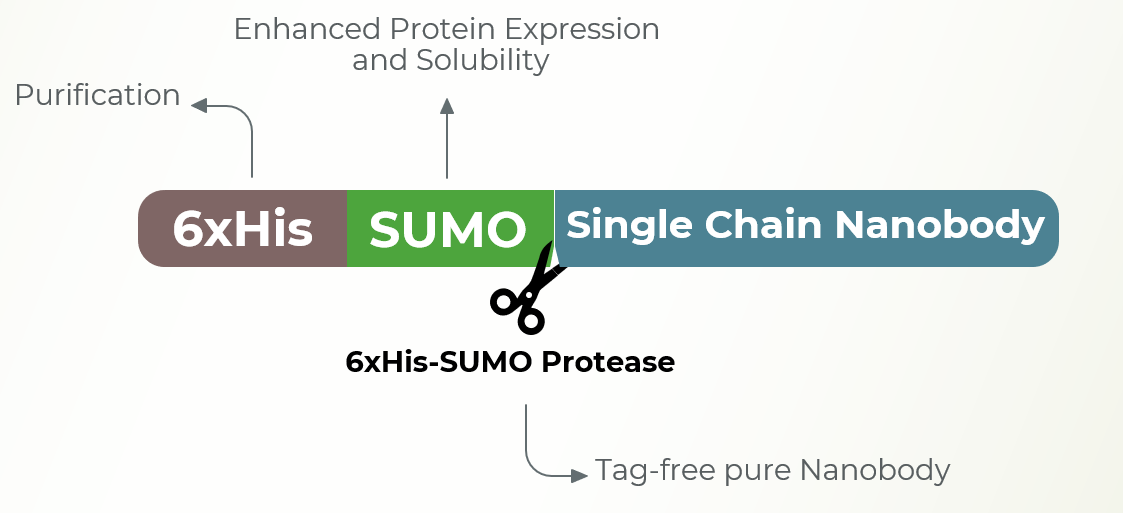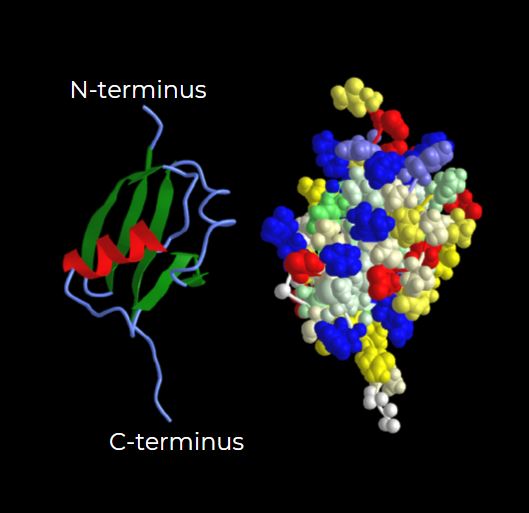Nanobodies and SUMO
Although mammalian cells have been proven as workhorses for antibody production, engineered single chain antibodies (nanobodies) are especially difficult to manufacture in mammalian cells. Many therapeutic programs are abandoned due to the lack of adequate and cost-effective expression. The engineered single chained antibodies express well as SUMO fusion in E.coli due to the chaperoning properties of SUMO to promote correct folding and protect the fused nanobody from degradation. These factors contribute to dramatically enhance protein production and improve the quality of nanobodies. The SUMO system is the most cost-effective way to generate the desired N-terminus of the protein. Nature designed SUMO to chaperone proteins in the cell. LifeSensors can guide scientists to the most suitable SUMO tag and SUMO protease to efficiently remove SUMO to reduce the cost of goods. LifeSensors can guide you from your cloning strategy to selection of strains/cell lines for the best expression and establish a non-GMP process from gene to nanobody. The process can be easily adapted for downstream GMP production of proteins.


